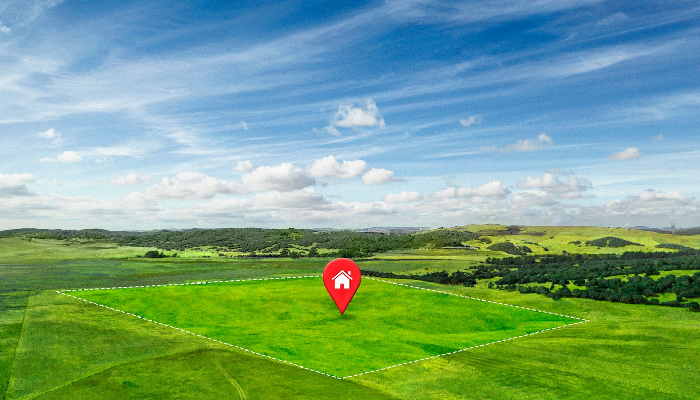Purchasing a parcel of California land for sale is an exciting milestone. Whether you’re planning to build your dream home, start a vineyard, or invest in future development, buying land opens up a world of opportunity. But once the deed is done and the title is in your name, what comes next?
The process doesn’t end at closing. In fact, some of the most critical steps come after the purchase. This guide outlines what to do after you buy land in California—legally, financially, and practically—so you can make the most of your investment.
Verify Legal Ownership and Record the Deed
After you close on your California land for sale, the first thing you need to do is ensure the deed is properly recorded with the county recorder’s office. This step officially transfers ownership into your name and provides legal proof of ownership.
Key Points:
- The title company or escrow officer typically records the deed on your behalf.
- You will receive a copy of the recorded deed store it safely.
- Confirm your name, parcel number, and legal description are accurate.

Understand Zoning and Land Use Regulations
Zoning laws in California vary by county and municipality. Understanding what is allowed on your land will save you from costly mistakes.
Subtopics to Consider:
- Residential, Commercial, or Agricultural Use: Know the zoning classification (e.g., R-1, A-2).
- Permitted Structures: Can you build a home, barn, or accessory dwelling unit (ADU)?
- Restrictions: Check for protected wildlife habitats, wetlands, or historical designations.
Action Steps:
- Contact your local planning or zoning department.
- Request a zoning map and land use plan for your parcel.
- Inquire about possible rezoning or conditional use permits if your goals don’t align with current zoning.
Conduct a Land Survey
Even if a preliminary survey was conducted before purchase, a professional land survey is highly recommended, especially if you’re planning to build.
Benefits of a Survey:
- Clarifies exact boundaries.
- Identifies easements, encroachments, and setback requirements.
- Helps avoid future legal disputes with neighbors.
Check for Utilities and Infrastructure Access
Most raw land doesn’t come equipped with ready access to electricity, water, sewage, or internet. Determining your utility options is crucial before development.
What to Evaluate:
- Electricity: Is the parcel near power lines, or will you need solar or generators?
- Water: Is there access to a municipal supply, or do you need to drill a well?
- Sewage: If there’s no city sewer, you’ll need to plan for a septic system.
- Internet and Cable: Rural areas may have limited connectivity options.
Contact utility providers for cost estimates and feasibility assessments before building.
Check for Environmental Concerns and Permits
California has some of the most stringent environmental protection laws in the country. Your land may be subject to restrictions or requirements before you can build or alter it.
Look Into:
- California Environmental Quality Act (CEQA): For larger projects or subdivisions.
- Wildfire Risk Zones: May require defensible space planning and fire-resistant materials.
- Flood Zones: Review FEMA maps and local drainage plans.
- Soil Testing: Especially important for septic systems and agricultural use.
Hiring a local land use consultant or environmental engineer can streamline this step.
Create a Long-Term Development or Investment Plan
Now that you own land, it’s time to decide how to best use it. Whether your goals are personal, agricultural, or investment-related, having a clear plan helps guide your next moves.
Possible Uses:
- Build a Custom Home: Apply for building permits, hire architects, and find contractors.
- Start a Farm or Ranch: Check local agricultural laws and water rights.
- Hold for Appreciation: California land tends to gain value over time, especially near expanding urban areas.
- Lease It Out: Consider leasing for farming, storage, or temporary events.
Document your goals and create a timeline for major milestones.
Secure Financing (If Needed) for Development
If your purchase of California land for sale was just the beginning, you may need additional funds for development or infrastructure.
Financing Options:
- Construction Loans: For building residential or commercial structures.
- Home Equity Loans: If you own another property with equity.
- USDA or FHA Loans: Some rural properties may qualify for government programs.
- Private Lenders: Useful for raw land or off-grid properties.
Work with a financial advisor to choose the most appropriate funding route.
Conclusion
Buying California land for sale is only the first step in a rewarding journey. Whether you intend to build, farm, or invest, your next actions will determine how quickly—and successfully—you realize your goals.
From zoning and environmental checks to securing financing and permits, proper planning and due diligence are crucial. Take the time to understand your land and its possibilities. Doing so will help you avoid costly delays and fully unlock the value of your California property.

Mary Burns is a dedicated writer focusing on health and fitness topics. With a passion for promoting wellness and vitality, Mary shares her knowledge and expertise through engaging and informative blog posts.




